Climate Change Update – Q3 2023
I usually make one single update per quarter, with a free and a premium part. This quarter there’s so many updates that I have twice the content, so I’ll spread it over two weeks and split the free and premium parts. So expect to receive four newsletters on Q3 2023 updates this week and next: One free and one premium each week.
Today, climate change update: Extreme Heat Events, Fewer Humans Will Die, Animal Extinctions, AMOC, How to Reflect the Sun, Ocean Fertilization, Seaweed Farming, and more.
The premium article this week will focus on some of the biggest forces that are driving the 21st Century—cities, transportation, and energy:
Rivers are key transportation lines and sources of irrigation, but they also bring something else, which is crucial for cities to thrive. What is it?
There was something special about England’s coal that catapulted it into the Industrial Revolution, something we haven’t discussed yet. What was it?
I’ve been talking with companies that are taking advantage of the cheaper cost to ship things to space. What are new things they’re doing that were impossible before?
Makers of nuclear power plants are upgrading them in a way that changes completely how we should think about nuclear energy. What is it?
And more about how cities form and disappear.
It’s hard to make a nuanced take on climate, so here’s a high-level summary of the core message from How Bad Is CO2? and 24 Surprising Facts About Climate Change:
Climate change is real and it’s caused by human activities.
It will dramatically increase the number of extreme heat events.
This will be very disruptive to humans, plants, and animals.
It’s likely, however, that fewer humans will die from weather in the future than in the past.
There will be more extinctions, which is very bad and we should really try to avoid. But it’s not going to be the end of the world. Plenty of fauna and flora diversity will continue.
Extreme Heat Events
To illustrate the second point, I used to share this graph:
But NASA has a much better one:
So it’s not just that average temperatures are increasing (moving right), which increases the number of heatwaves. It’s also that the tail of extreme heat events is inflating (getting fatter), making such extreme heat events much more frequent than the previous graph suggested.
Fewer Humans Will Die
A reminder, though, that cold extremes still kill many more people than heat extremes, and on balance, fewer humans are likely to die from climate in the future than do now. This graph puts it in an interesting way: As heat deaths increase, cold deaths decrease, and the balance will probably be positive in the coming decades.
That doesn’t mean that we’re all safe:
Animal Extinctions
We will need to adapt. But we can do that faster than animals, which will cause them problems. To illustrate the downside of Point 5 (there will be extinctions) above:
According to this paper, about 50% of species are declining1. These are mostly in tropical areas, whereas animals in colder climates are thriving. Similar to humans.
Is this good? No. It’s terrible. But how terrible?
Before looking into this, I thought we were starting the 6th mass extinction. I don’t think that anymore. Here are the Big Five Mass Extinction Events2:
You’ll notice that every event drove 75% of species or more to extinction. Some up to 96%. Here, only 50% are even declining—and I assume most of them will survive3.
So yes, this is bad. We must do what we can to avoid it. But from what I can tell it doesn’t appear to be “Big Five Mass Extinction Events” bad.
Antarctic Ice Melt
The Antarctic Ocean is losing ice fast.
Here’s the anomaly, shown as the share of ocean ice cover above 15%:
Here is the same thing, but looking at the anomaly rather than the amount of ice:
How Bad Is It?
The world is sharing crazy scenes of the effects of extreme heat.
And other wild weather events.
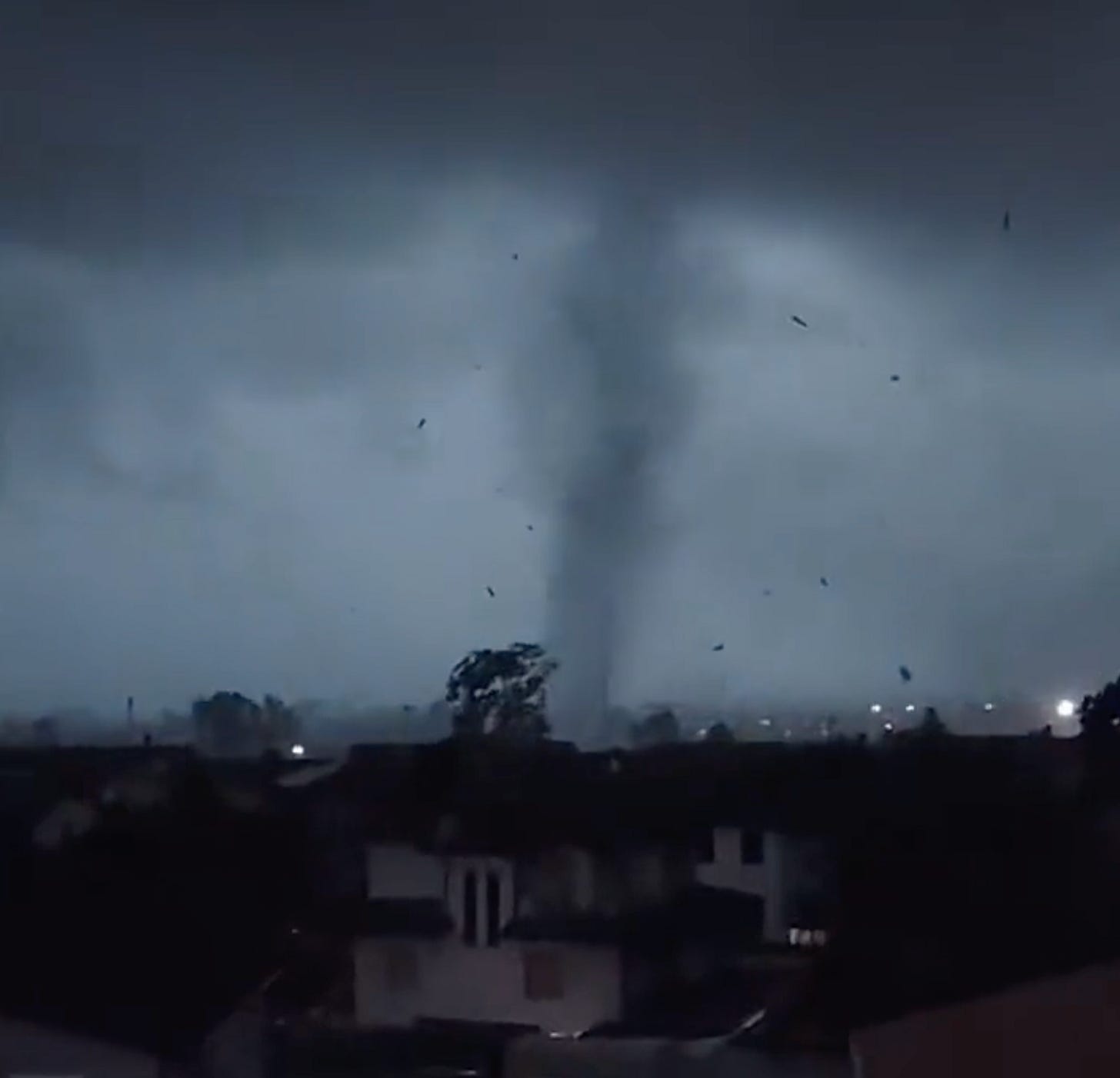
Indeed, global temperatures are reaching new records.
But is this completely wild and unforeseen? Is the world warming faster than expected? Not quite.
Temperatures are actually in the range we predicted—maybe slightly higher than the predictions, which is reasonable during El Niño years. The same is true for the average sea surface temperatures. But not for all sea temperatures:
Something exceptional is happening to North Atlantic sea surface temperatures.— Zeke Hausfather, Are temperatures this summer hotter than scientists expected?
Running AMOC
The Atlantic Meridional Overturning Circulation, or AMOC, is critical to weather patterns in the North Atlantic.
But the AMOC is not very stable. It has changed frequently in the past.
Now we know that it was stable for the last 1,000 years and that it has started changing dramatically in the last few decades.

In Why Are Tropical Waters Dead, and Can They Kill Europe? I cautioned that changes in the AMOC might well be one of the climate tipping points that make life on Earth much harder for humans. That might turn out to be true.
I said above that the AMOC has been stable for 1,000 years. Some scientists think it’s been stable for about 12,000 years. That is, since… the last glaciation.
One misconception is that the Gulf Stream will stop. No, it won’t. It’s the result of the rotation of the Earth. But the AMOC might, and that could cool Europe by 5ºC. And the AMOC might not come back for thousands of years.
The Atlantic Shows the Way
You may know that one of the reasons the North Atlantic is heating so fast is that seafaring ships stopped burning fuels with sulfur in 2020.
SO2 is a pollutant to humans. But it reflects sunlight.
Here are the SO2 emissions—the result of shipping lanes—and hence where the impact of SO2 reducing temperatures has been the highest so far:
According to this scientist, a crude approximation suggests that the cessation of ships burning sulfur-containing fuels has warmed the North Atlantic by 0.25ºC, which explains much of the temperature anomaly. This, with El Niño, would fully explain the heating of the Atlantic.
In other words, we should start burning sulfur again.
Reflect the Sun
Another way to reflect the Sun is by painting things white. This paint reflects 98% of sunlight, way better than the 80%-90% reflected by standard white paints. Apparently, coating 1-2% of the Earth in this paint would reflect enough sunlight to stop global warming.
More Life in the Ocean
In Why Are Tropical Waters Dead, and Can They Kill Europe?, I explained how transparent waters meant dead waters, and that the central oceanic regions between the Equator and the Poles are largely devoid of life.
A new paper suggests that these areas are actually getting more life as a result of climate change:
Let’s see this as a green lining.
Ocean Fertilization
Since we’re on the topic of ocean fertilization, I claimed in the past that oceans were like deserts. The Friends of Animals Police4 tried to bash me, saying in turn that “oceans are not deserts, they’re full of life” and, later, that “actually deserts are full of life too”.
Although I do agree that both have *some* life, the point is that huge swaths of Earth have very little life. That’s relevant, because if you want to create more life, you should be taking places that have very little, and make it into a Garden of Eden.
I was able to find the source for the organic matter generated per square meter per year. Look at these three panels:
I find it easiest to start with the panel on the right. It tells you where there’s the most life production (measured in mass of organic matter produced): in open ocean and the tropical rainforest, the two darker bars.
How do they produce it? In the case of tropical rainforest, by having a massive amount of generation of biomass per m2 (middle panel). But hold on! Algal beds and reefs produce even more! Meanwhile, look at the open ocean at the top: It has an extremely low generation of organic matter per m2! Approximately as much as desert and semidesert scrub. It very much is like a desert.
Now if you go to the graph on the left, you can see that tropical rainforests cover a sizable share of the Earth, about 3.5%. That, plus the high density of biomass they create per m2, results in that big biomass generation on the right.
Now compare this to the top bar, open ocean. It’s truncated. If it wasn’t, it would be more than 10x bigger than it appears on this graph! No wonder it creates so much biomass: The open ocean is gigantic! It creates this biomass despite being so big. Because its generation of biomass per m2 is so low.
If you look down, though, you can see that algal beds and reefs only cover 0.1% of the Earth’s surface. If we were able to combine the surface of oceans with the productivity of algal beds, we would increase the amount of life on Earth by 10x to 100x!
We should totally farm the ocean.
Seaweed Farming
An article on MIT Review disagrees.
It says that we would need 1 million square km (1 M km2) of ocean farming to extract 1 gigaton (Gt) of CO2 from the atmosphere. According to the article, 1 M km2 is very hard to come by. And compare the 1 Gt we can get to the 2.5 to 13 Gt of CO2 we need to capture.
This is wrong on so many levels.
First, it assumes that the benefit is the direct carbon capture of seaweed production. It forgets the massive advantage of replacing current farming, which means eliminating the need for nitrate fertilizer (a high consumer of energy through the Haber-Bosch process), as well as the problem of methane from cows. More importantly, it would allow us to rewild a lot of terrestrial farmland.
Second, it assumes that 1 M km2 is a lot. As a comparison, it says that 1.4 M km2 are cultivated in the US. But humans cultivate over 17 M km2 of land in total, or 32% of all land. Since there are 360 M km2 of oceans, if we used the same share of oceans, that would be 115 M km2 —over 100 times the area that the article claims is hard to farm.
Of course, not all ocean waters are equal. This is the third mistake: The article is based on a paper that assumes that Equatorial Pacific Ocean waters would be the most productive, so it models everything accordingly. But as we saw in Farm the Ocean, waters closer to the poles are much richer in nutrients.
Fourth, the paper looks at nutrients in the top layer of the ocean5. This is a typical mistake: assuming obstacles can’t be eliminated. As we discussed, some companies are creating artificial upwelling, and others move seaweed up and down in the ocean to capture the sunlight during the day and deeper nutrients at night.
Fifth, the paper misses that iron can create the most limiting factor for growth: nitrates. As we saw in The Nutrients of Life and a Better Alternative to Iron Fertilization, there’s plenty of nitrogen everywhere—in the form of hard-to-break N2. Most animals and plants6 can’t break N2 into usable molecules, but some ocean plants can. They just need enough energy (available from the Sun) and iron (which can be easily provided via ferruginous7 soil).
How many massive decisions does humanity make that are influenced by reporting like this, that misses crucial nuances?
And in the Mountains
The ocean is not the only thing that’s greening.
The Andes mountains in Peru are also greening. The researchers aren’t venturing a rationale yet, although I assume climate change is a major candidate.
Hydrogen Correction
In Why Hydrogen Is Not the Answer, I bash hydrogen with gusto. Sometimes too much. A reader corrected me: In a hydrogen car tank, you need high pressure or low temperature, but not both. Thank you!
Hydrogen Is Still Not the Answer Though
Germany’s Lower Saxony government just discovered this. It is replacing Lower Saxony’s few, new hydrogen trains with electric battery ones. Hydrogen trains appear to be 80% more expensive.
And about 1% of species have disappeared, although the paper doesn’t make it clear since when. It looks like it’s since the IUCN Red List started listing them. The organization behind it was established in 1964.
To spell it out:
Ordovician-Silurian Extinction (about 443 million years ago):
Estimated species lost: Up to 85%
Possible causes: Intense glacial and interglacial periods created large swings in sea levels and moved shorelines dramatically. Tectonic uplift of the Appalachian mountains created lots of weathering, sequestration of CO2 and with it, changes in climate and ocean chemistry.
Late Devonian Extinction (about 375-360 million years ago):
Estimated species lost: 70-75%
Possible causes: Rapid growth and diversification of land plants generated rapid and severe global cooling.
Permian-Triassic Extinction (often called the "Great Dying", about 252 million years ago):
Estimated species lost: Up to 96%
Possible causes: This is the largest mass extinction event in Earth's history. Potential causes include Intense volcanic activity in Siberia. This caused global warming. Elevated CO2 and sulphur (H2S) levels from volcanoes caused ocean acidification, acid rain, and other changes in ocean and land chemistry.
Triassic-Jurassic Extinction (about 201 million years ago):
Estimated species lost: 80%
Possible causes: Underwater volcanic activity in the Central Atlantic Magmatic Province (CAMP) caused global warming, and a dramatic change in chemistry composition in the oceans.
Cretaceous-Paleogene Extinction (about 66 million years ago):
Estimated species lost: About 75%
Asteroid impact in Yucatán, Mexico. This caused global cataclysm and rapid cooling. Some changes may have already pre-dated this asteroid, with intense volcanic activity and tectonic uplift.
Species can be shrinking due to a loss of habitat, but the habitat won’t completely disappear. In other cases, species might be shrinking, but this pressure will make them evolve and adapt to the new environments, the way rats, raccoons, starlings, crows, pigeons, and many more animals have adapted and thrive. Yet another group might start growing back up as humans learn to treat the Earth better. I don’t have data to back this up, but I’d assume a majority of species shrinking today will fall in these buckets. To say nothing of concepts like reviving species with their DNA (which I believe we’ll probably be able to do in the near future).
Any similarity with existing acronyms is pure coincidence.
More specifically, the top 20 m, and then the top 100 m assuming natural upwelling of water.
Using the word broadly for understandability. It’s not just plants but also seaweeds, cyanobacteria, phytoplankton, and the like.
“That contains a lot of iron.”






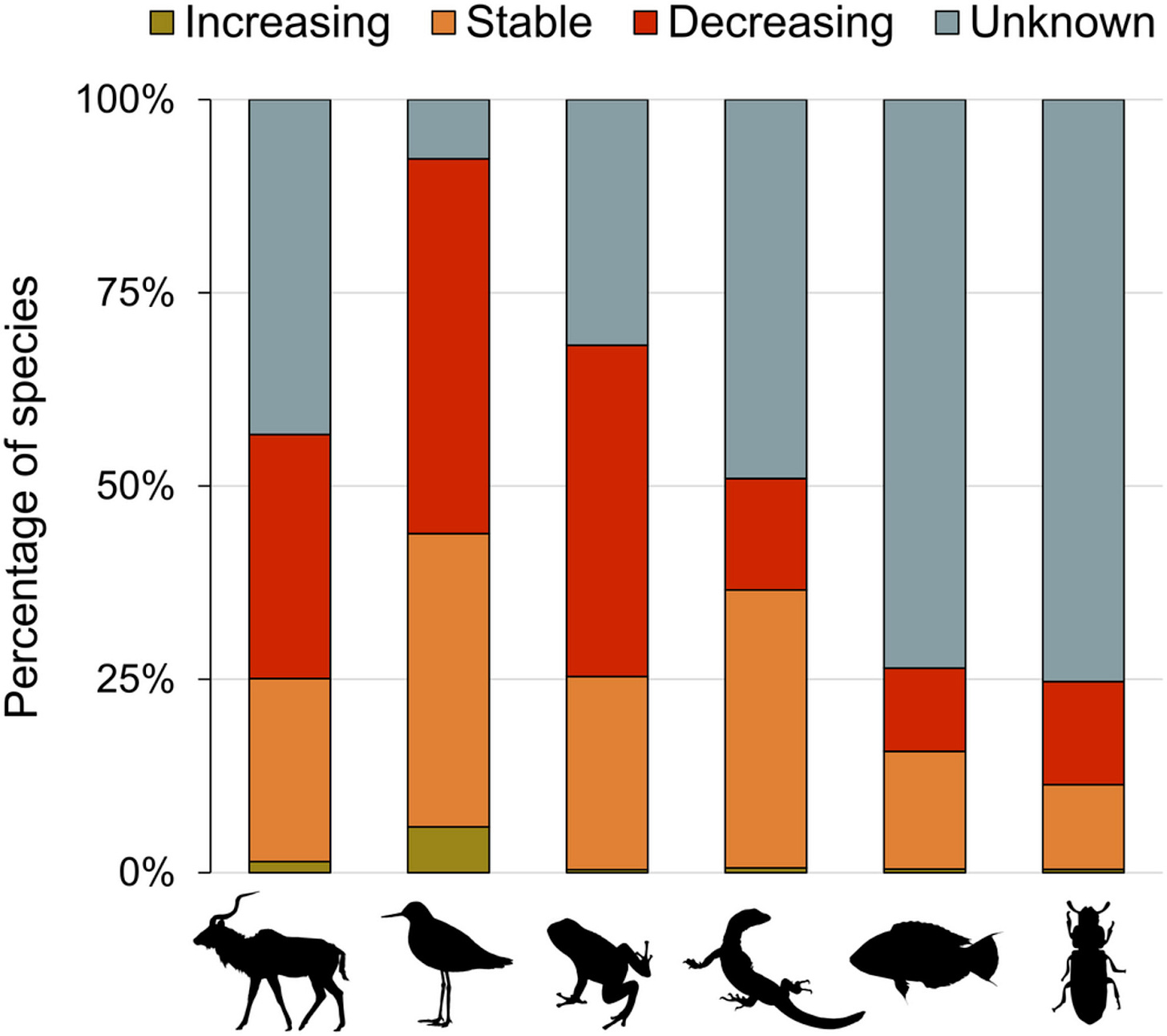


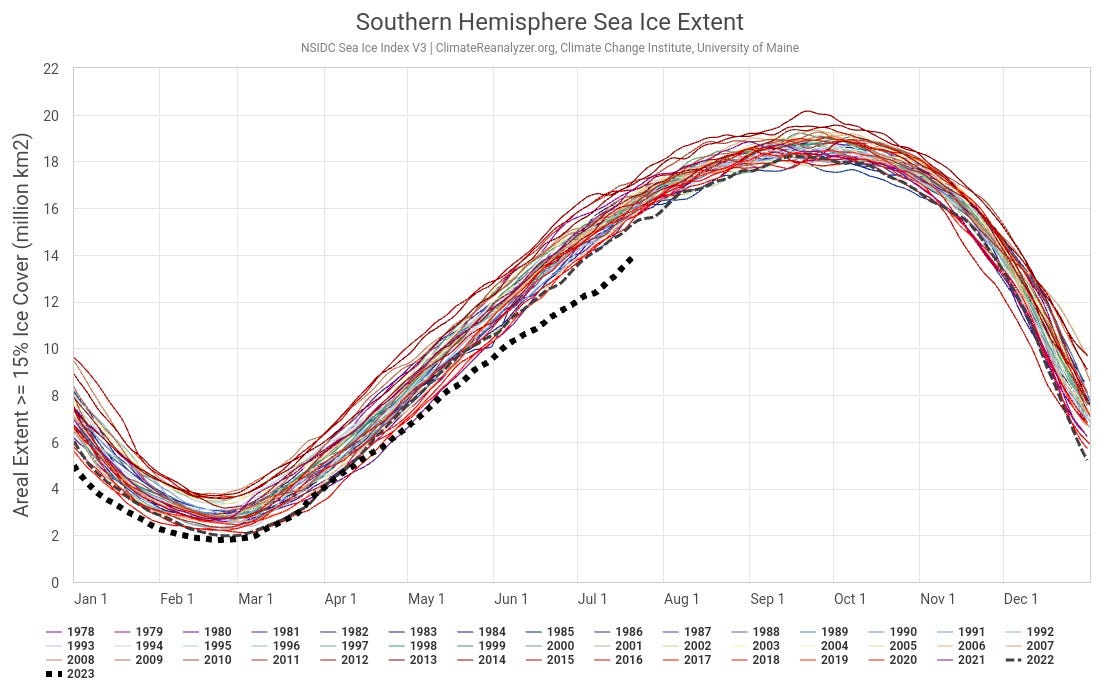
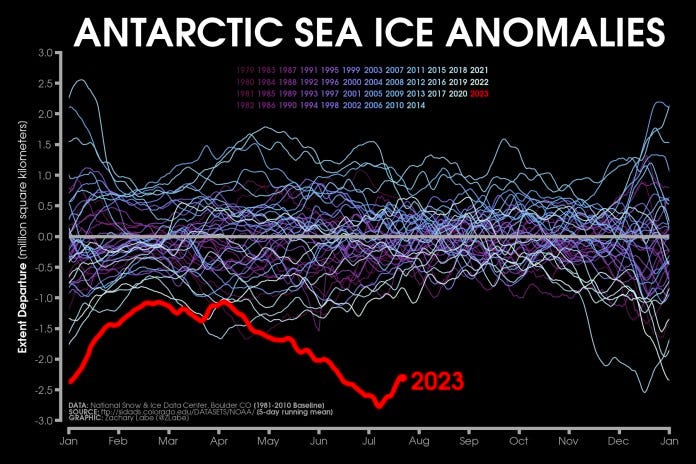

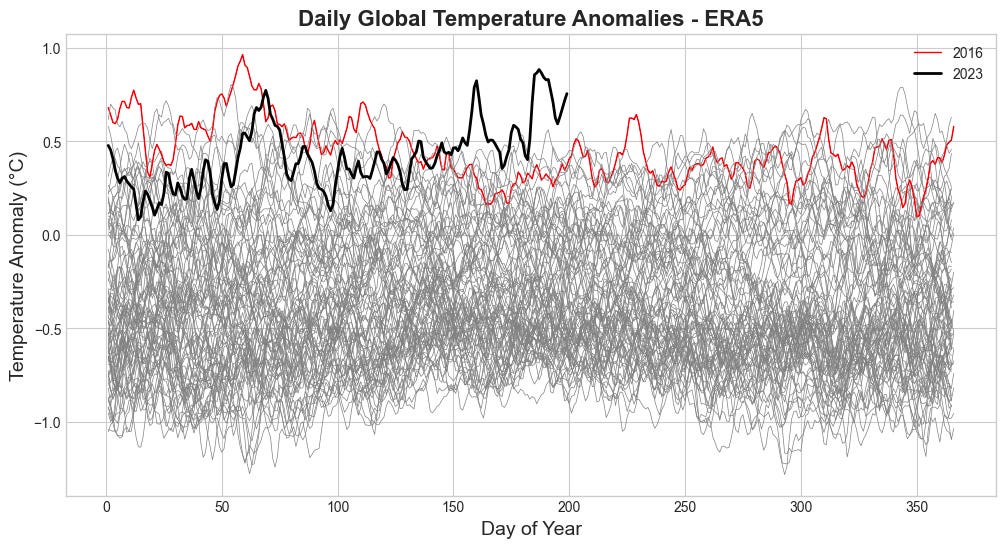








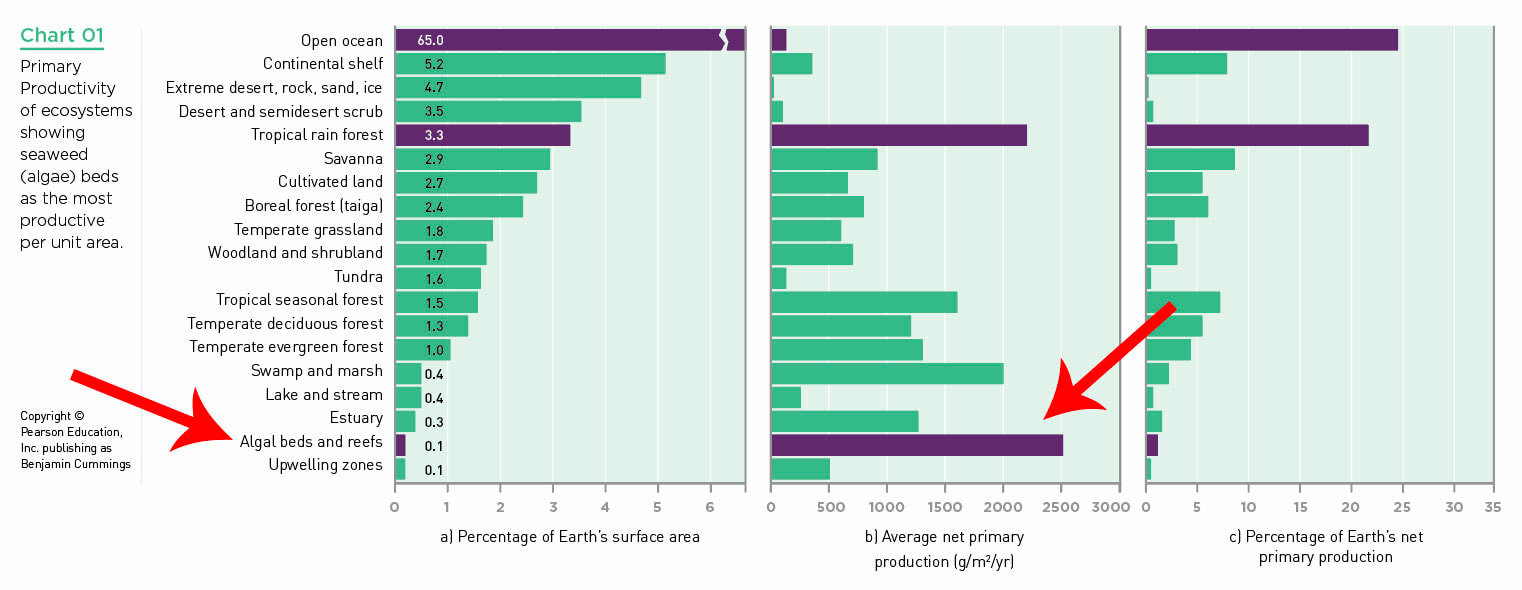

Presenting only the extinction rates underestimates the severity of the global defaunation. Many animals are not actually extinct yet, but many of their populations disappeared and shrunk so much that they do not fulfill their roles in ecosystems (ecologically extinct) or have so low population sizes that they cannot be exploited by humans anymore. (https://www.science.org/doi/10.1126/sciadv.1400253)
It's not ok to present Arizona deaths from extreme heat without adjusting for crazy population growth over those same years and the age of all the snowbirds.